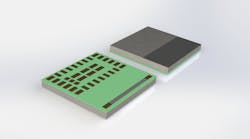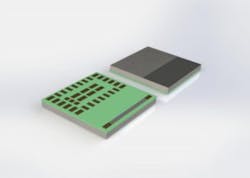Smyrna, GA. Murata Americas has announced the release of its Nordic-based Bluetooth Low Energy module. The latest WSM device consists of Nordic Semiconductor’s nRF52832 IC, a 32-MHz crystal for timing, and an on-board antenna. Additionally, it contains two pins for an off-board omnidirectional antenna and an NFC antenna. The module provides a Serial Port Interface (SPI) and UART interface to Nordic’s nRF52832 M4 Cortex processor.
With this functionality and small footprint, it is suited for OEMs wanting to develop Internet of Things devices. Target markets include Industrial IoT, energy, and home- and office-automation applications. Specific end products include asset-tracking devices, medical insulin pumps, white goods, and other consumer goods that require connectivity.
“Murata leads in developing the transformational tools that enable connectivity. That is why world-class companies like Nordic Semiconductor choose to team with us,” said Jim Philipp, senior marketing manager, Murata Americas.
“As the IoT rapidly rolls out, the underpinning technology is increasingly in demand—making it essential that companies launch their Bluetooth low energy IoT products quickly and cost effectively,” said Geir Langeland, director of sales and marketing, Nordic Semiconductor. “Murata has taken full advantage of the nRF52832 SoC’s powerful features to offer a module that can be incorporated into compact wireless products by engineers with limited RF experience—decreasing time to market—yet can support the most demanding Bluetooth low energy IoT applications.”


